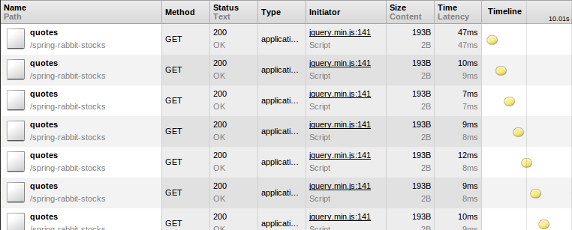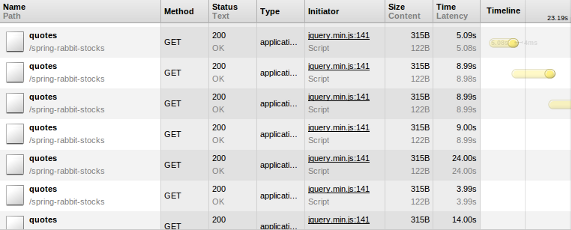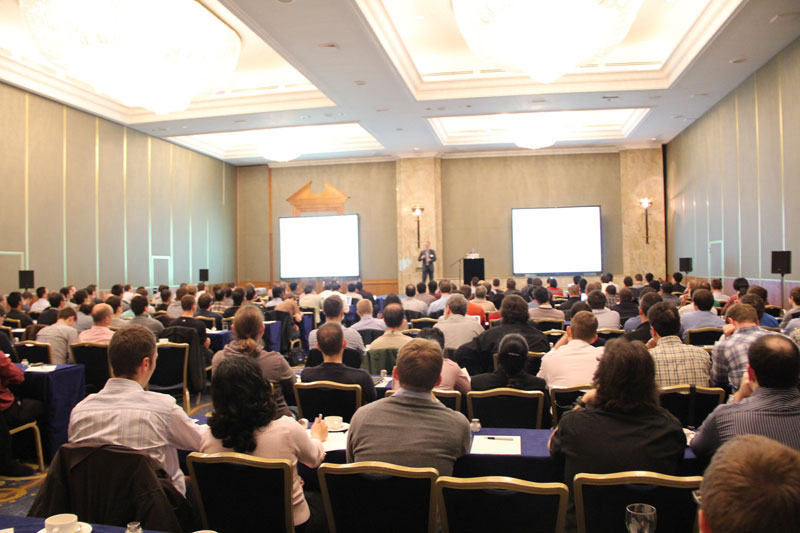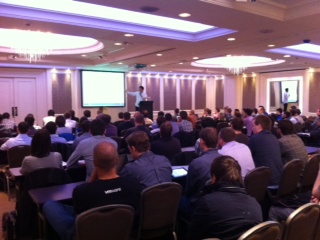This Week in Spring - May 22nd, 2012
Welcome back to another installment of This Week in Spring. We have a lot of great content this week, as usual!
- Rossen Stoyanchev has put up another blog in his series on Spring MVC 3.2 Preview. This latest installment introduces a Spring MVC chat example.
- Oliver Gierke has announced the 1.1.0 GA version of Spring Data JPA. Spring Data JPA makes it very simple to build JPA-based repositories, saving you from the tedious boiler plate code. This new release includes new keywords for query generation (
LessThanEqual,GreaterThanEqual,Before,After,StartsWith,EndsWith, andContains), a handyPersistenceUnitPostProcessorto scan for JPA entities (to be used in Spring versions before 3.1), support for native queries in@Query, and support for declarative locking. - Jonathan Brisbin announced the 1.0.0.M2 release of Spring Data REST. Spring Data REST let's you easily export your Spring repository objects as RESTful endpoints. The new release includes support for invoking query methods of
Repositoryinterfaces, support for JSR 303 and Spring Validator validations, and improved support for SpringApplicationEvents that are emitted before and after each save or delete, and annotation-based configuration. - Oleg Zhurakousky has announced the first milestone release of Spring Integration 2.2. This release includes dependency upgrades, JPA support, and support for "publisher confirms and returns," which are newly supported in Spring AMQP.
- Gary Russell has announced version 1.1.0 of Spring AMQP that includes support for the RabbitMQ 2.8.x client, which in turn supports mirrored queues, broker failover, publisher confirms, returns, federated exchanges, and much more.
- Matt Vickery has a great post introducing the Spring Integration splitter-aggregator pattern.
- Willie Wheeler has a great post up on his custom configuration management database (a CMDB). The post details the project, and then talks about his use of Spring Data's repositories in rebuilding the backend for CMDB. Nice post, Willie!
- Doug Haber put together a wonderful post on handling paging using Spring Data and the REST support in Spring 3.1.
- Blogger panbhatt has a detailed post on using Spring MVC's REST support to solve a particular set of problems he was having.
- Blogger OBSERWATORZY described his particular thought process when trying to consume a RESTful service, and wondering if Spring provided an answer (of course it did!). Read on for his resolution.
- Vishal Biyani has put together a nice introduction to getting started with Spring Roo and Cloud Foundry.
- The RabbitMQ blog has an amazing article introducing queueing theory (with an introduction to throughput, latency and bandwidth.
- JAXEnter has a nice roundup of some of the news releases described in this very post, including the Spring AMQP and Spring Data JPA's GAs.





